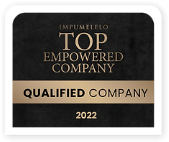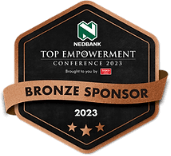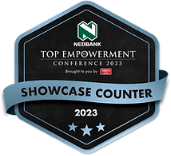Unless you live under a rock, you’ll know that companies with Top Employer certification generally shout this achievement from the rooftops. This global certification isn’t easy to obtain – and it lasts just a year – but it’s a feather in the cap of HR departments and offers companies a chance to boast publicly about their people practices.
The certification process
The Top Employers certification is awarded by the Top Employers Institute – a global certification body that operates in over 120 countries. There are four steps in the certification process:
Step 1: Pre-screening
After contacting the Top Employers Institute, they’ll conduct a pre-screening to make sure you’re eligible to participate.
· If you’re a South African company, you’ll need a minimum of 250 employees nationally.
· Multinationals need a minimum of 2,500 employees worldwide.
· The Institute will also evaluate the maturity of your HR department and HR policies.
Step 2: Survey
The Institute requires a representative from the HR department (together with other departments where relevant) to complete a rigorous online HR Best Practices Survey, which assesses 350 HR best practices over six domains and 20 topics. The survey is regularly updated since the HR domain is constantly evolving.
| Steer Business strategy People strategy Leadership | Shape Organisation and change Digital HR Work environment | Attract Employer branding Talent acquisition Onboarding |
Develop Performance Career Learning | Engage Wellbeing Engagement Rewards and recognition Offboarding | Unite Values Ethics and integrity Diversity and inclusion Sustainability |
Step 3: Validation
The Institute conducts an in-depth review of both the survey results and the HR documentation you submit, to make sure that the HR standards in your company are up to the Institute’s global standards.
Step 4: Certification
During the final stage, an external auditor independently verifies the Institute’s systems, processes and data. Your company’s performance score is then rated against the international standard. Once verified, you’ll be certified as a Top Employer, and will be able to use the title and certification seal for one year.
Improving your chances of certification
As part of the validation process, the Top Employers Institute evaluates the survey responses against your HR documentation, so there’s no place to hide. If your company is only paying lip service to people practices, you’re unlikely to get certified.
So, before you even start the process, make sure you’ve got the fundamentals right.
1. Ensure that your policies and procedures are complete and up to date
HR policies and procedures are a key component of your Top Employer submission, and they’ll be used to validate the survey responses.
· Do you have a complete set of policies and procedures, or are some things missing?
· Have they been updated with the latest Acts, regulations and codes of good practice, or are they outdated?
· Are your policies and procedures integrated, or were they developed separately and over the course of many years?
· Do they reflect recent changes in the world of work – such as work-life balance, employee wellness and pay parity – or are they antiquated?
2. Enable company-wide access to L&D
For many South African businesses, L&D is focused on meeting B-BBEE targets. But the Top Employers Institute is a global organisation that benchmarks against international standards, not local laws.
· Does everyone in your company have access to L&D opportunities, or is this a luxury reserved for the few?
· Are you using your Workplace Skills Plan as a real tool to plan training, or are you compiling it just to get back your levy? (You’re compiling the plan anyway, so you may as well make the best of it.)
· Are you properly evaluating the quality and impact of L&D interventions, or are you deploying them just for the sake of it?
3. Make sure your IDPs are active and supported
Individual development plans (IDPs) play a key role in employee morale, retention, development and succession planning.
· Have you done a recent skills audit to identify skills and development gaps between where your company is and where it wants to be? Or are you using outdated data or assumptions?
· Are your IDPs up to date, and are they treated as living documents?
· Have managers and employees bought into the IDPs? Do they understand exactly how the process works?
· Are you enjoying the full benefits of your IDP and appraisal process?
4. Implement real measures towards DE&I
South African companies may be more attuned to diversity, equity and inclusion (DE&I) than many of our international counterparts, but again the focus is often limited to meeting legislative requirements.
The Top Employers Institute has highlighted DE&I as a key HR topic for 2023, so you can bet that these issues will be scrutinised in their survey.
· Do you have a well-functioning and impactful EE Committee with representatives from senior management?
· Do you have DE&I objectives that go beyond the EE and B-BBEE Acts and related legislation?
· What initiatives do you have in place to support women and people with disabilities?
5. Focus on the entire employee journey
The South African labour market has a surplus of human capital. Supply far outweighs demand, and many local companies have a wide choice of candidates.
The result is that certain parts of the employee journey – particularly recruitment, onboarding and retention – receive less attention than they deserve.
· Is your approach to DE&I reflected in your recruitment practices?
· Are new recruits properly onboarded and welcomed into the company?
· If you compare yourself to your international counterparts, are you meeting the bar when it comes to employee retention? (Consider Europe, for example, where companies are offering work-from-home opportunities, flexible working hours, non-contributory pension and provident schemes, and gym membership – to name a few.)
Changing your mindset to compare your company’s people practices to global (rather than local) best practices will require time and effort, but it’s exactly these international standards that you’ll need to achieve to be awarded Top Employer certification.



